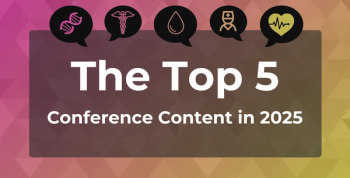
Health Equity & Access Weekly Roundup: November 2, 2024
Key Takeaways
- Social determinants of health interventions face barriers, including unclear ROI, despite efforts to integrate health care and social services.
- Employers are shifting to equity-focused strategies to manage rising health care costs, with dissatisfaction in current pharmacy benefits management practices.
This week’s Center on Health Equity & Access highlights emphasize the role of social determinants of health in policy-making and underscore the importance of addressing rising costs and challenges employers face.
Understanding the Financial Return to Investments in the Social Determinants of Health
Despite broad recognition of the important role social determinants of health (SDOH) play in health outcomes, substantial barriers remain, including the lack of clear evidence on such interventions' effectiveness and return on investment (ROI). Efforts by federal, state, and private sectors, like the Center for Medicare and Medicaid Innovation's Accountable Health Communities model, seek to bridge the gap between health care and social services. Yet, challenges persist in implementation and coordination with community-based organizations (CBOs). The authors outlined recommendations to enhance SDOH impact, such as increasing federal support, leveraging CBO expertise, expanding data-sharing, and fostering cross-sector partnerships, advocating for policy actions to promote sustainable SDOH funding.
Employers Shift to Equity-Focused Strategies as Health Costs Outpace Wages
The Pulse of the Purchaser 2024 survey published this week by
Contributor: Vulnerable Seniors Are at Risk With Looming Medicare Advantage Cuts—Income-Based Programs Can Minimize the Damage
The 2024 Medicare Advantage (MA) open enrollment period reveals significant challenges for beneficiaries as regulatory changes and financial pressures force MA plans to cut benefits and raise costs. With an average of 43 MA options, many seniors face plan disruptions, with 1.38 million losing access to their current plan and 4.56 million automatically moving to new plans. Key changes include increased Part D deductibles, reduced supplemental benefits like Flex Card allowances and over-the-counter coverage, and increased premiums, leaving many beneficiaries—particularly low-income seniors—at risk of higher out-of-pocket expenses. Income-based programs such as Medicaid could help alleviate these costs, but up to half of eligible seniors remain unenrolled. As seniors navigate these changes, using resources like the Medicare Advantage Annual Enrollment period checklist and external advisors may help them better understand their options and secure necessary benefits amidst the shifting landscape.
New AI Tool Identifies Undiagnosed PNH in Health Records
A recent study investigated using a machine learning model to help identify undiagnosed cases of paroxysmal nocturnal hemoglobinuria (PNH), a
Biosimilars Expand Access and Reduce Costs in Oncology, Immunology
New research presented at the
Newsletter
Stay ahead of policy, cost, and value—subscribe to AJMC for expert insights at the intersection of clinical care and health economics.









































